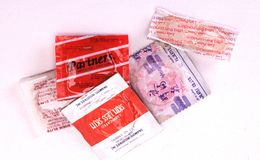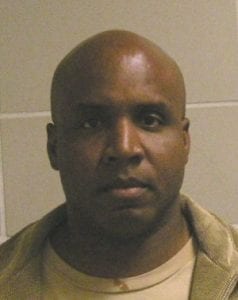
Medical school is a hard road that develops scientific students into healers who diagnose sickness, soothe pain, and promote health. It tests knowledge, improves judgment, and teaches a new generation of doctors. A simple overview explains how hard work can transform notes into actions that save lives and how studying may keep jobs up to date.
Basic Principles in Preclinical Study
The first two years are all about science that explains how cells come together to make tissues, organs, and whole systems that operate together. Professors speak regularly about biochemistry, anatomy, pharmacology, and pathology. Labs demonstrate theory using preserved specimens, digital models, and microscope slides. Students cut up, label, and draw diagrams until they understand how things are related. Weekly case workshops encourage classmates to use fresh information to solve patient riddles, which helps them strengthen their diagnostic logic. Regular written and practical tests help students remember what they’ve learned, and brief shadow shifts in clinics connect textbooks to actual patients. Evenings allow time for exercise and relaxation, but rigorous study takes up most of the time. This shows early on that medicine values consistency, collaboration, and accurate recollection above cramming at the last minute. All subsequent clinical decisions are based on these habits.
Full Immersion Throughout Clinical Rotations
In the third and fourth years, students study in bustling wards where stretchers go by imaging doors and sirens go off on monitors. During morning rounds with nurses and pharmacists, students join care teams, take histories, evaluate patients, and report to residents. There are rotations in medicine, surgery, pediatrics, obstetrics, psychiatry, and emergency care, each lasting several weeks and reflecting diverse stresses and feelings. Supervisors teach sterile technique, flowing commands, and how to provide calm advice. Quick feedback helps reduce mistakes to a minimum. Call evenings go till dawn, which builds endurance and judgment when decisions have real-life consequences. Pocket cards show how much medicine to take, but pleasant words may frequently help quicker than medicines. Rotation marks and national board scores help people choose a residency, so it’s important to stay awake even when you’re tired. The grins of grateful family members show that the work was worth it. Always.
Intensive Skill-Building During the Residency Years
After graduation, you get an MD, but residency makes sure you know what you’re doing by putting you through three to seven years of hard work that starts before dawn and ends after midnight. Interns go over night reports, make changes to instructions, and hurry to morning meetings where commanders go over previous instances, pointing out indications that were overlooked and safer ways. Daily practice makes pathways stronger, so therapeutic options come to mind quickly in an emergency. Next comes progressive responsibility. Second-year residents are in charge of interns, lead coding, and performing complicated operations with the help of attending doctors. Weekend research projects look for ways to enhance quality that cut infection rates or shorten hospitalizations. Duty hour guidelines say that nurses must relax, yet rotating night blocks nevertheless test their strength by requiring them to work together to make sure no patient has to wait. After graduation, you may get board certification and feel certain that you can balance science, empathy, and efficiency.
Specialization or Community Work
New physicians might do fellowship training or work immediately. Fellowships run one to three years and specialize in cardiology, neonatology, or orthopedic trauma, where new technology and genetic data modify treatment weekly. Fellows organize research, publish results, and understand regional center methods for rare, high-risk periods. Community clinics treat infections, chronic illnesses, and build life-long relationships. Group partnerships exchange records, imaging, and call pools, which helps keep schedules balanced. Many people are drawn to rural hospitals because of loan payback schemes. Telemedicine connects experts to places that are far away. Your choices depend on your lifestyle, service gaps, and money, but all of them provide learning opportunities via seminars, conferences, and licensing credits. Public health authorities also engage doctors to run illness programs in their areas.
Expanding Responsibilities and New Career Paths
Medical research never stops. It keeps coming up with new medications, imaging methods, and data analytics that need to be studied even after formal training is over. Doctors go to grand rounds, read peer-reviewed publications, and do online courses that go over the rules for treating high blood pressure, screening for cancer, and treating infections. Hospital credential committees keep track of who has finished their training and link it to privileges for using devices and performing complicated operations. There are many career options beyond just bedside care. A lot of physicians educate students, work on quality programs in hospitals, provide advice to health-tech businesses, or push politicians for legislation. Leadership workshops help teams plan and communicate better to offer safer care when resources are few. Electronic records, AI tools, and monitoring platforms—such as those integrated into modern Schiller medical equipment from Exam Tables Direct—simplify routine tasks, freeing up time for more in-depth counseling that machines can’t accomplish. Adaptable doctors succeed with inquiry and empathy.
Conclusion
There are planned chapters in a medical career that turn motivated students into professionals who can mix science, compassion, and leadership. Hard preclinical courses establish knowledge; hospital rotations put theory into practice; residency and fellowship make reflexes stronger under pressure; and continuing education keeps practice up to date. Doctors have a mission to protect life and promote health, whether they are running a rural clinic, doing research at an academic institution, or making policies. Knowing exactly what to do at each phase keeps people committed and gives communities competent care.
SEE ALSO: Unique Medical Careers Worth Considering












